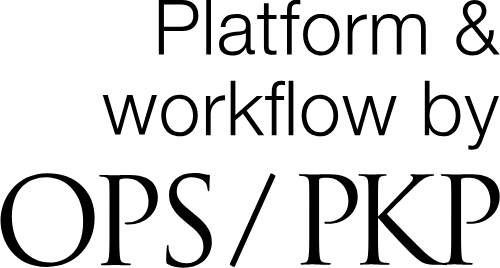Physiological training in striking combat sports
A protocol for a systematic review
DOI:
https://doi.org/10.51224/SRXIV.505Keywords:
combat sports, physiology, training programme, sport, interventionAbstract
Introduction: Physiological training can be used to improve the capacity and efficiency of the body’s internal energy systems. The capability of the three energy systems; 1) adenosine triphosphate and phosphocreatine (ATP-PCr) 2) glycolytic 3) oxidative, can distinguish between lower- and higher-level combat sport athletes. Therefore, physiological training is of great importance for athlete’s wishing to improve athletic performance. However, no study has reviewed the scientific literature regarding physiological training programmes for striking combat sports, such as boxing, kickboxing, karate, muay Thai or taekwondo. Therefore, the objective of this review is to synthesise the literature on the effectiveness of physiological training programmes in striking combat sports.
Alongside tactical, technical and strength development, physiological development is a key factor in success for combat sport athletes. Literature around striking combat sport physiology is an area that has been monitored in multiple ways across boxing, karate, kickboxing, muay Thai and taekwondo. However, reviews in this area for coaches and practitioners with the desire to optimise physiological training for their fighters has not yet been produced. The objective of this review is to analyse the extent to which physiological training can develop fighter physiology in striking combat sports, to allow coaches and researchers to better understand how to optimise performance through training.
Methods: The review will be conducted in accordance with the Joanna Briggs Institute (JBI) and reported according to Preferred Reporting Items for Systematic Review and Meta-analysis (PRISMA) guidelines. Four databases (PubMed, Scopus, SPORTDiscus and Web of Science) will be searched. Two reviewers will independently screen the title and abstracts, before assessing the full text of the remaining articles. The relevant data will be extracted and presented in tables.
Dissemination: The systematic review will summarise the available literature that analyses physiological training in striking combat sports, with the findings used to direct future combat sport conditioning training and research. The authors aim to publish the review in a peer-reviewed journal and present the findings at a relevant conference.
Metrics
References
E. Aromataris, C. Lockwood, K. Porritt, B. Pilla and Z. Jordan Z. “JBI Manual for Evidence Synthesis.” JBI; 2024. Available from: https://synthesismanual.jbi.global.
J.S. Baker, M.C. McCormick and R.A. Robergs. “Interaction among skeletal muscle metabolic energy systems during intense exercise.” Journal of nutrition and metabolism, 2010(1), p.905612.
O.R. Barley, D.W. Chapman and C.R. Abbiss. “The current state of weight-cutting in combat sports.” Sports, 2019 7(5), p.123.
J.D. Bartlett, J. Louhelainen, Z. Iqbal, A.J., Cochran, M.J. Gibala, W. Gregson, G.L. Close, B. Drust and J.P. Morton. “Reduced carbohydrate availability enhances exercise-induced p53 signaling in human skeletal muscle: implications for mitochondrial biogenesis.” American Journal of Physiology-Regulatory, Integrative and Comparative Physiology, 2013, 304(6), pp.R450-R458.
J. Bergström and E. Hultman. “A study of the glycogen metabolism during exercise in man.” Scandinavian journal of clinical and laboratory investigation, 1967, 19(3), pp.218-228.
S.H. Downs and N. Black. “The feasibility of creating a checklist for the assessment of the methodological quality both of randomised and non-randomised studies of health care interventions, Journal of epidemiology and community health, 52(6), 377-384.
Z. Dziubiński. 2024. “The prestige of martial arts and combat sports from a sociological perspective.” Journal of Martial Arts Anthropology, 2024, 24(2), pp.11-18.
D.A. Hood. “Mechanisms of exercise-induced mitochondrial biogenesis in skeletal muscle.” Applied Physiology, Nutrition, and Metabolism, 2009, 34(3), pp.465-472.
L.P. James, G.G. Haff, V.G. Kelly and E.M. Beckman. “Towards a determination of the physiological characteristics distinguishing successful mixed martial arts athletes: a systematic review of combat sport literature.” Sports Medicine, 2016 46, pp.1525-1551.
A.E. Jeukendrup, M.K.C. Hesselink, A.C. Snyder, H. Kuipers and H.A Keizer. “Physiological changes in male competitive cyclists after two weeks of intensified training.” International journal of sports medicine, 1992, 13(07), pp. 534-541.
I. Lahart and P. Robertson. “Strength and conditioning programme design for combat sports.” Advances in Strength and Conditioning Research, 2009. New York: Nova Science Publishers.
K.A., Matsushigue, K. Hartmann and E. Franchini. “Taekwondo: Physiological responses and
match analysis.” Journal of Strength and Conditioning Research, 2009, 4:1112-1117. doi:10.1519/JSC.0b013e3181a3c597.
A.K.A. McKay, T. Stellingwerf, E.S. Smith, D.T. Martin, I. Mujika, V.L Goosey-Tolfrey, J. Sheppard and L.M. Burke. “Defining Training and Performance Caliber: A Participant Classification Framework.” International journal of sports physiology and performance, 2022 17(2), 317–331. https://doi.org/10.1123/ijspp.2021-0451
M.J. Page, J.E. McKenzie, P.M. Bossuyt, I. Boutron, T.C. Hoffmann, C.D. Mulrow, L. Shamseer, J.M., Tetzlaff, E.A. Akl, S.E. Brennan, R. Chou, J. Glanville, J.M. Grimshaw, A. Hróbjartsson, M.M. Lalu, T. Li, E.W. Loder, E. Mayo-Wilson, S. McDonald, L.A. McGuinness, L.A. Stewart, J. Thomas, A.C. Tricco, V.A. Welch, P. Whiting and D. Moher. “The PRISMA 2020 statement: An updated guideline for reporting systematic reviews.”
J.J. Rodrigues-Silva, F. Boscolo Del Vecchio, L. Merseburger Picanço, M. Yuri Takito and E. Franchini. “Time-motion analysis in Muay-Thai and kick-boxing amateur matches.” Journal of Human Sport and Exercise, 2011, 6 490–496. 10.4100/jhse.2011.63.02.
S. Snyder. “Energy Systems”. Clinical Nutrition in Athletic Training, 2024, (pp. 41-48). Routledge.
Additional Files
Posted
License
Copyright (c) 2025 Adam Kirkwood, Georgina Stebbings, Laurence Birdsey, Dale Read (Author)

This work is licensed under a Creative Commons Attribution 4.0 International License.

